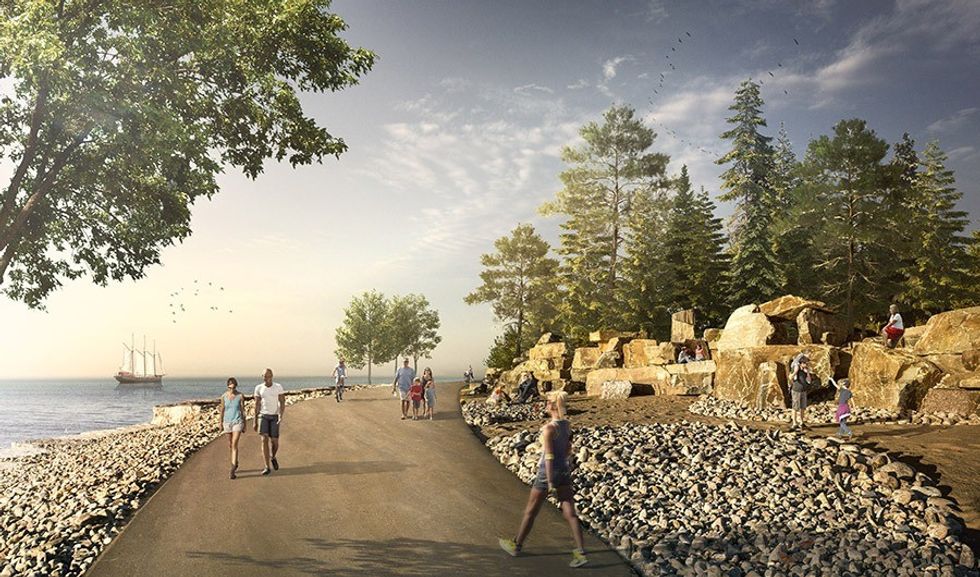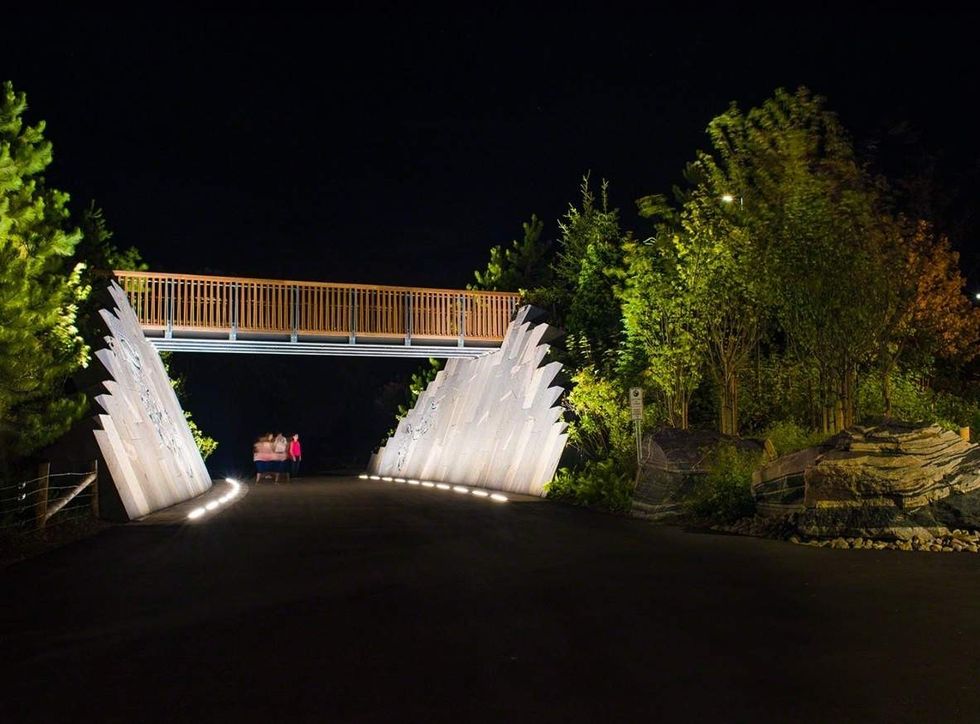
Toronto has a section of its beloved Ontario Place back, sans amusement park and slides but with a new multi-million-dollar greenspace that has breathed new life into the longtime lakeside relic.
Another notch in the city’s belt of bountiful and expansive waterfront parks, the $32-million Trillium Park and William G. Davis Trail is a lush, 7.5-acre crisscross of parkland, trails and amenities on a site that was once a parking lot.
Premier Kathleen Wynne, flanked by key officials, cut the ribbon on Monday, officially opening to the public the free and accessible year-round destination, a welcome addition to the waterfront for neighbouring communities and visitors alike.
The new park, with 1,200 newly planted trees and thousands of shrubs and perennials, features an open-air pavilion and outdoor spaces that will host film festivals, art fairs, food vendors and yoga classes. The 1.3-kilometre trail will connect the park to the Trans Canada Trail, which makes up more than 2,000 kilometres.

Led by LANDinc, a Toronto-based consulting firm of landscape architects, known for their work in urban design, landscape architecture and environmental planning, the park and trail are the first phase of a three-and-a-half-year revitalization project at Ontario Place. Falling into disrepair and shuttered in 2012, the once-prime tourist destination and kid-friendly amusement park was a bustling accompaniment to the adjacent Molson Amphitheatre concert grounds, recently renamed the Budweiser Stage.
Patrick Morello, principal at LANDinc, notes that the park and trail at Ontario Place have become “a new and essential destination along Toronto’s waterfront. It is like a natural wonderland and will be a very popular place for years to come.”
He said the park will serve as a “bold step to connect the western waterfront to the city.”
Ontario Place opened in May 1971 as an education, recreation and entertainment centre comprising three artificial islands connected by bridges and walkways, and the geodesic dome of the Cinesphere, an iconic image often seen in promotional material showcasing the province’s attractions.
In the next phase of development, the Cinesphere is expected to re-open in the fall with a new IMAX projector. The province will continue to subsidize the park, which contains several design elements honouring the site’s Indigenous heritage.

Walter Kehm, principal at LANDinc, said the revitalized space is “a new synthesis where visitors can experience the natural history of Ontario while recognizing the contributions of the First Nations to the city of Toronto and the Province of Ontario. Ontario’s new urban forest consists of native tree and shrub species creating a natural landscape for relaxation and exploration.”
In describing the lush, natural environment, Morello said: “The trails meander through rolling landforms, rock outcrops, pebble beaches and the native plantings giving rise to spectacular views of the city and the infinite horizon across Lake Ontario.
“It is a celebration of the experience where land meets the water.”
Trillium Park and William G Davis Trail, named for the premier at the time and Ontario Place’s visionary, join the ranks of newly established greenspaces in downtown Toronto, including Sherbourne Common; Sugar Beach and HTO Parks; and such naturalized parks as Harbour Square and Coronation Park, reinvigorating several underused sections along the lake’s edge.
Here's another glimpse of Toronto's newest public greenspace:





















